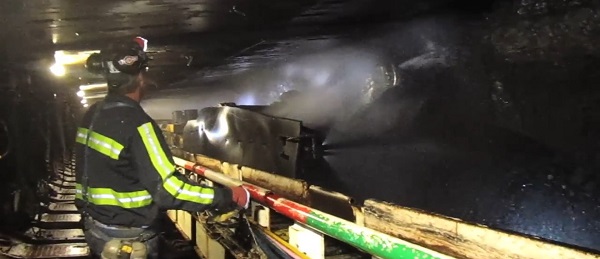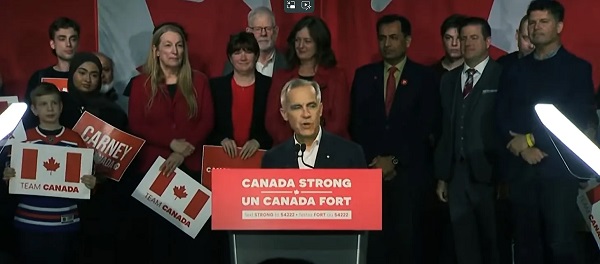Alberta
Premier Smith to Ottawa: Alberta can’t afford thousands of asylum seekers right now

From Free Alberta Strategy
For decades, Canada’s immigration policies were uncontroversial – parties across the spectrum maintained generally sensible policies.
But the current government in Ottawa has ditched this consensus, and the public mood is turning fast.
A large influx of newcomers has put a significant strain on public services and the housing market across the country.
Alberta, in particular, is feeling the strain, as our province receives both a disproportionately large share of the immigrants arriving in Canada, as well as by far the largest number of people moving between provinces.
Earlier this year, the Alberta government reported that in the year from April 2023 to April 2024, Alberta’s population had grown a record 4.11%, representing 204,677 people.
This is by far the highest annual growth rate in the country, outpacing second-place Ontario by nearly a full percentage point.
Importantly, international migration is responsible for about 68% of the increase, interprovincial migration is responsible for about 25%, and just 8% is caused by natural increase.
Another area of immigration that has significantly increased in Alberta is asylum seekers, which have more than doubled from 5,076 per year to 11,292 per year.
Of course, this represents just a small portion of the overall immigration to Alberta, and Alberta actually accepts a much smaller share of asylum seekers (about 5% of the total) compared with our population (about 12% of Canada).
But, Ottawa is now pushing to change this – they want provinces like Alberta to accept more of their “fair share” of asylum seekers – despite the fact that Alberta already receives more than its “fair share” of other types of immigrants.
Federal Immigration Minister Marc Millers says the federal government anticipates full cooperation from all provinces and territories as it strives for a fair and sustainable approach to managing the influx.
He says the federal government has “levers that we need to push and pull” when it comes to enticing provinces to agree to their terms:
“The reality is that Quebec and Ontario are facing disproportionate pressures, compared to any other province in the country – as they have been welcoming the majority of asylum seekers,” says the Minister.
“We will have proper incentives for those willing to welcome asylum seekers, and will take a holistic view with regards to other immigration programs based on participation – as this is work we cannot do alone, nor unilaterally. All options remain on the table.”
In other words, the federal government is once again planning on spending more of our tax dollars to effectively bribe the provinces’ to go along with their policies.
This idea isn’t new – Quebec has already urged the Trudeau government to disperse asylum-seekers more evenly across the provinces.
Premier Smith, however, is saying no:
“Section 95 of the Constitution is clear – immigration is an area of shared authority between the federal government and the provinces.”
“We are informing the Government of Canada that until further notice, Alberta is not open to having these additional asylum seekers settled in our province,” she added.
“We simply cannot afford it.”
Maybe, when the full details of the federal government’s plan are made public, the numbers will stack up.
But, based on past precedent, it seems unlikely.
More likely, this is just another agreement with the federal government that Alberta can’t afford to make.
Time and time again, we’ve seen the federal government approach the provincial government with a deal that – in Ottawa’s view – is good for the province.
We know, as we’ve seen with the nationalized childcare fiasco, that these deals very rarely work out for Alberta.
The Free Alberta Strategy continues to be Alberta’s shield against federal overreach, ensuring that Albertans remain in control of our future.
This issue is just the latest battle in which our unwavering defence of our provinces’ best interests can make a real difference.
If you believe in defending Alberta from Ottawa, join us!
Your contribution will help ensure that the Free Alberta Strategy has the resources and voice it needs to push back.
Donate today to stand up for Alberta’s sovereignty and sustainability!
Alberta
Made in Alberta! Province makes it easier to support local products with Buy Local program

Show your Alberta side. Buy Local. |
When the going gets tough, Albertans stick together. That’s why Alberta’s government is launching a new campaign to benefit hard-working Albertans.
Global uncertainty is threatening the livelihoods of hard-working Alberta farmers, ranchers, processors and their families. The ‘Buy Local’ campaign, recently launched by Alberta’s government, encourages consumers to eat, drink and buy local to show our unified support for the province’s agriculture and food industry.
The government’s ‘Buy Local’ campaign encourages consumers to buy products from Alberta’s hard-working farmers, ranchers and food processors that produce safe, nutritious food for Albertans, Canadians and the world.
“It’s time to let these hard-working Albertans know we have their back. Now, more than ever, we need to shop local and buy made-in-Alberta products. The next time you are grocery shopping or go out for dinner or a drink with your friends or family, support local to demonstrate your Alberta pride. We are pleased tariffs don’t impact the ag industry right now and will keep advocating for our ag industry.”
Alberta’s government supports consumer choice. We are providing tools to help folks easily identify Alberta- and Canadian-made foods and products. Choosing local products keeps Albertans’ hard-earned dollars in our province. Whether it is farm-fresh vegetables, potatoes, honey, craft beer, frozen food or our world-renowned beef, Alberta has an abundance of fresh foods produced right on our doorstep.
Quick facts
- This summer, Albertans can support local at more than 150 farmers’ markets across the province and meet the folks who make, bake and grow our food.
- In March 2023, the Alberta government launched the ‘Made in Alberta’ voluntary food and beverage labelling program to support local agriculture and food sectors.
- Through direct connections with processors, the program has created the momentum to continue expanding consumer awareness about the ‘Made in Alberta’ label to help shoppers quickly identify foods and beverages produced in our province.
- Made in Alberta product catalogue website
Related information
Alberta
Province to expand services provided by Alberta Sheriffs: New policing option for municipalities

Expanding municipal police service options |
Proposed amendments would help ensure Alberta’s evolving public safety needs are met while also giving municipalities more options for local policing.
As first announced with the introduction of the Public Safety Statutes Amendment Act, 2024, Alberta’s government is considering creating a new independent agency police service to assume the police-like duties currently performed by Alberta Sheriffs. If passed, Bill 49 would lay additional groundwork for the new police service.
Proposed amendments to the Police Act recognize the unique challenges faced by different communities and seek to empower local governments to adopt strategies that effectively respond to their specific safety concerns, enhancing overall public safety across the province.
If passed, Bill 49 would specify that the new agency would be a Crown corporation with an independent board of directors to oversee its day-to-day operations. The new agency would be operationally independent from the government, consistent with all police services in Alberta. Unlike the Alberta Sheriffs, officers in the new police service would be directly employed by the police service rather than by the government.
“With this bill, we are taking the necessary steps to address the unique public safety concerns in communities across Alberta. As we work towards creating an independent agency police service, we are providing an essential component of Alberta’s police framework for years to come. Our aim is for the new agency is to ensure that Albertans are safe in their communities and receive the best possible service when they need it most.”
Additional amendments would allow municipalities to select the new agency as their local police service once it becomes fully operational and the necessary standards, capacity and frameworks are in place. Alberta’s government is committed to ensuring the new agency works collaboratively with all police services to meet the province’s evolving public safety needs and improve law enforcement response times, particularly in rural communities. While the RCMP would remain the official provincial police service, municipalities would have a new option for their local policing needs.
Once established, the agency would strengthen Alberta’s existing policing model and complement the province’s current police services, which include the RCMP, Indigenous police services and municipal police. It would help fill gaps and ensure law enforcement resources are deployed efficiently across the province.
Related information
-

 2025 Federal Election2 days ago
2025 Federal Election2 days agoRCMP Whistleblowers Accuse Members of Mark Carney’s Inner Circle of Security Breaches and Surveillance
-

 Daily Caller19 hours ago
Daily Caller19 hours agoTrump Executive Orders ensure ‘Beautiful Clean’ Affordable Coal will continue to bolster US energy grid
-

 Business20 hours ago
Business20 hours agoChina, Mexico, Canada Flagged in $1.4 Billion Fentanyl Trade by U.S. Financial Watchdog
-

 2025 Federal Election2 days ago
2025 Federal Election2 days agoBureau Exclusive: Chinese Election Interference Network Tied to Senate Breach Investigation
-

 2025 Federal Election19 hours ago
2025 Federal Election19 hours agoBREAKING from THE BUREAU: Pro-Beijing Group That Pushed Erin O’Toole’s Exit Warns Chinese Canadians to “Vote Carefully”
-

 2025 Federal Election1 day ago
2025 Federal Election1 day agoTucker Carlson Interviews Maxime Bernier: Trump’s Tariffs, Mass Immigration, and the Oncoming Canadian Revolution
-

 2025 Federal Election17 hours ago
2025 Federal Election17 hours agoAllegations of ethical misconduct by the Prime Minister and Government of Canada during the current federal election campaign
-

 COVID-1914 hours ago
COVID-1914 hours agoTamara Lich and Chris Barber trial update: The Longest Mischief Trial of All Time continues..





